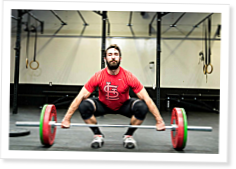
Arguing about technique variations is pointless without clear definitions and data.
Good exercise technique versus bad exercise technique: Everyone seems to have an opinion about what makes a movement acceptable and what makes it unacceptable.
The mantra of every book, article and blog post on exercise injury or gym safety is “bad technique causes injury.” But in the fitness industry, no one agrees on the exact elements of good technique, and despite a lack of agreement, certain groups within the industry will heap criticism upon anyone who does not adhere to their version of good technique. This occurs even if these groups themselves cannot reliably define and describe good technique for any given exercise. This is not to say technique is not important. It is.
Among others, organizations such as the American College of Sports Medicine (ACSM), the National Strength and Conditioning Association (NSCA), and the American Council on Exercise (ACE) have been publishing and selling their versions of good exercise technique for many decades. As such, these organizations appear to be established authorities that provide easily accessible information upon which a new trainer can base practice. But can we actually base the concept of safe technique upon the opinions of such organizations?
If we review publications from fitness groups, most technique descriptions are generally no more than a paragraph or two placed alongside a photo or two. In the traditional fitness industry, we really don’t have a reliable reference publication that defines and demonstrates good and bad technique, though CrossFit Training is working very hard to change that. It just might be that the fitness industry has based its entire approach to technique on the historical experiences of trainers and coaches or possibly on unsupported concepts. The former is moderately acceptable, and the latter is completely unacceptable.
No comments:
Post a Comment